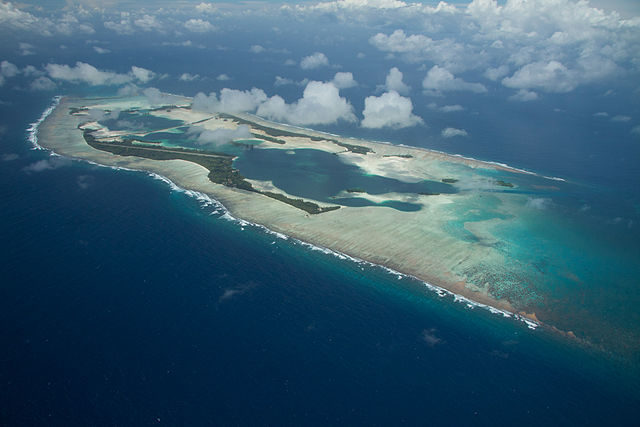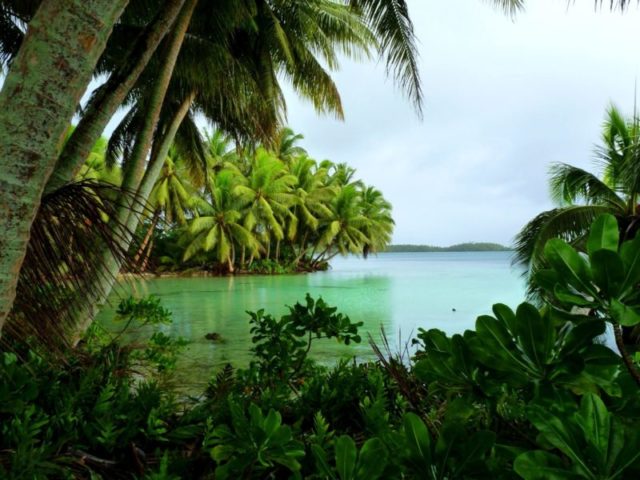Palmyra Atoll is located in the Pacific Ocean, south of the Hawaiian Islands, approximately one-third of the way from Hawaii to American Samoa. It is not very large; its coastline is 9 miles (14 km) long and has just one anchorage point known as West Lagoon.
This small 4.6 square mile island has no permanent inhabitants, but a few people–mostly research scientists–visit it every year to examine its flora and fauna.

The first claimed sighting of the Palmyra Atoll was by Captain Edmund Fanning in 1798. According to his memoirs, he was sailing Betsy, an American sealing ship, on a voyage to Asia. It was a restless night for the captain, the night before he discovered Palmyra. According to the journal, he was awakened numerous times during the night.
The third time he got out on the deck and, realizing there was no wind, he gave a command for Betsy’s anchor to be lowered. The next morning they resumed sailing and, after just one nautical mile, they spotted the reef that would later be named Palmyra. According to Fanning, the ship would doubtless have been wrecked had they encountered the reef in darkness.

Captain Cornelius Sowle of the USS Palmyra was not so lucky. After his ship was wrecked on the reef of this atoll, it was declared officially discovered and was named after the unfortunate vessel. According to Sowle’s journal, and later proven by archaeologists, there were no people living on this island.
No Micronesian, Polynesian, or any other pre-European settlements had been established there before 1802. His journal reads: “There are no inhabitants on the island, nor was any fresh water found; but coconuts of a very large size are in great abundance; and fish of various kinds and in large shoals surround the land.”

The next time the atoll was visited was in 1842 as part of the great United States Exploring Expedition. The leader of this expedition was Charles Wilkes on board the USS Porpoise. This was the first of many scientific visits to the Palmyra Atoll. Many samples of native flora and fauna were collected, including some of the unusually big coconuts.
First described in 1913 by botanist Joseph F. Rock, the species Cocos nucifera palmyrensis, which is unique to Palmyra, is reportedly the largest and longest type of coconut in the world, with a more triangular shape than the classic, round coconut. Today the atoll is a protected habitat of many unique species.

In 1859 the United States claimed Palmyra Atoll as their own territory with the Guano Islands Act. The irony is that this atoll had no guano at all. Three years later the king of Hawaii, King Kamehameha IV, sent two of his citizens to take possession of the atoll. And on April 15, 1862, Palmyra Atoll was officially annexed to the Kingdom of Hawaii, and the two citizens commissioned to take the possession back, Captain Zenas Bent and Johnson Beswick Wilkinson, became joint owners of it.

There are stories about a cargo of Inca treasure that was lost from the Esperanza somewhere in the Pacific Ocean and ended up being buried by pirates on Palmyra Island.
The ship was carrying the large haul of gold, silver, and precious stones to the Spanish West Indies when she was heavily damaged in a storm. Being an easy target, Esperanza was soon boarded by pirates who took the treasure and scuttled the ship. After a month or so, the pirates own ship, the Santa Rosa, was caught in a storm. They were shipwrecked on the shores of Palmyra, where they decided to bury most of the treasure. The tale of the Esperanza and the Santa Rosa inspired the great Jack London to write The Proud Goat of Aloysius Pankburn.
